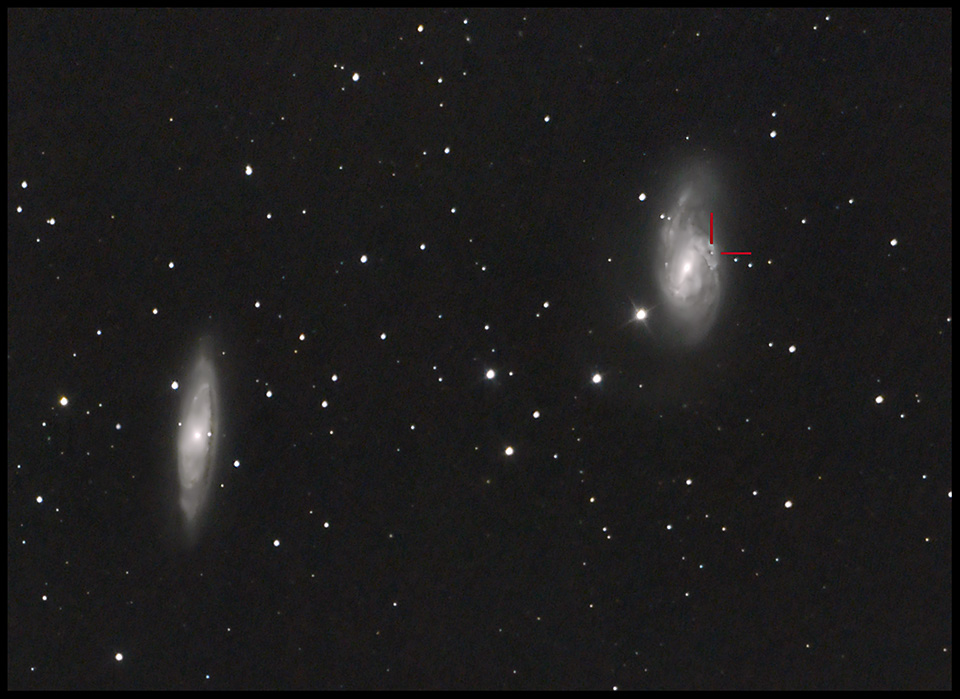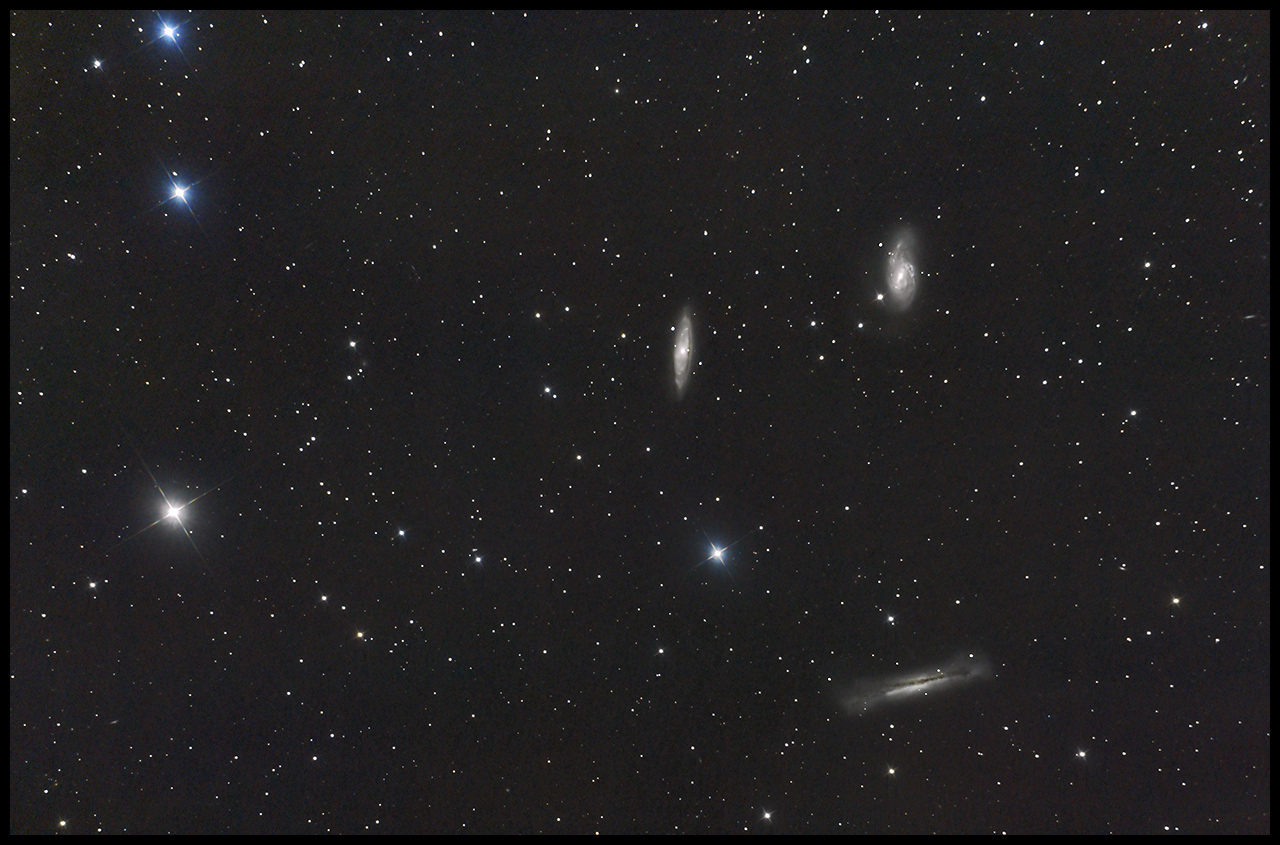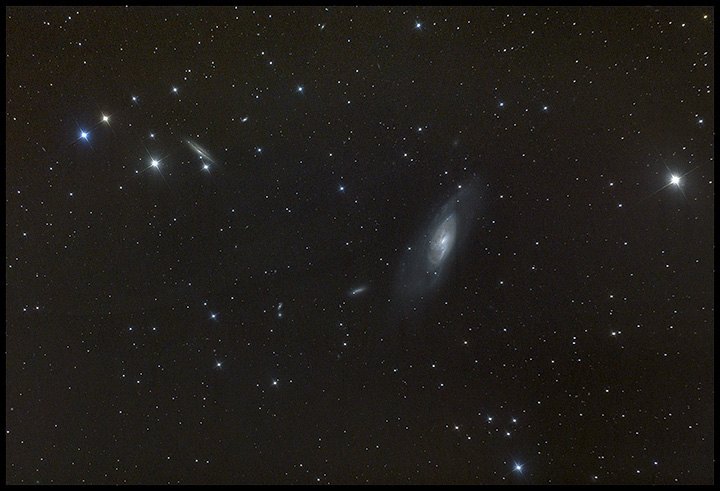The Realm of the Nebulae
The Coma Galaxy Cluster, the Trio in Leo, M106
06/07/2016. Three clear nights were in the forecast so I figured I had to use them or stop complaining about North Carolina skies. It's late spring, which means it's galaxy season, so I figured I'd start by trying for a good widefield of the Coma Galaxy Cluster, where Fritz Zwicky applied some remarkably simple observations to show that not everything is at seems, and, for that matter, that not everything is seen.
Everything blue or spikey in this picture is a "nearby" star where "near" means up to a few hundred light-years. Pretty much everything else is a galaxy ~220 million light-years away. 3 hours of exposure, a 10-inch reflector, and a Canon 6D: that gets you clear (or clearish) images of galaxies to just below 19th magnitude and fair piles of extra noise where even fainter galaxies lurk. I wouldn't be surprised if there were detectable signals down to around 21st magnitude.

Click it. How can you see the galaxies if you won't click the pic?
6/8/2016. Brighter subjects tonight: the Trio in Leo including M66 with a 16th magnitude supernova (something else Fritz Zwicky recognized before others). I got better flats tonight (using twilight rather than a diffuser) and will need to rework the Coma image above with them (practice, Mister, practice). Also some techniques picked up in imaging the next target, M106, need to be applied (see below). In the meantime, here's tonight's evening target. First, the cropped image with the supernova marked. Then the full field:

M65 & M66 (supernova marked)
Click for a better peek.

The Trio in Leo
27x180s (1h 21m)
As usual, click for a better view.
Pardon me while I go pack up from shooting M106. Stay tuned for that one. Tomorrow. Well. The Mach1's RA gearbox slipped as I slewed it to Park 1. I rebalanced the load and remeshed the drive gear in the morning. I'm sure the synchronization between the factory loaded Periodic Error Curve and the hardware has been lost (as if it had not been misplaced before now), so I might need to finally download and get to know PemPro software to rebuild and reload the PEC function. Here's M106 from last night.

M106
40x180s (2h)
As usual, click for a better view.
PixInsight discovery: process "TGVDenoise" works especially well in CIE L*a*b mode on chrominance noise; and I've slightly revised the workflow presented last October.